Nosta Restaurant
Dolma – Stuffed Mediterranean dish
Published on:
September 29, 2021
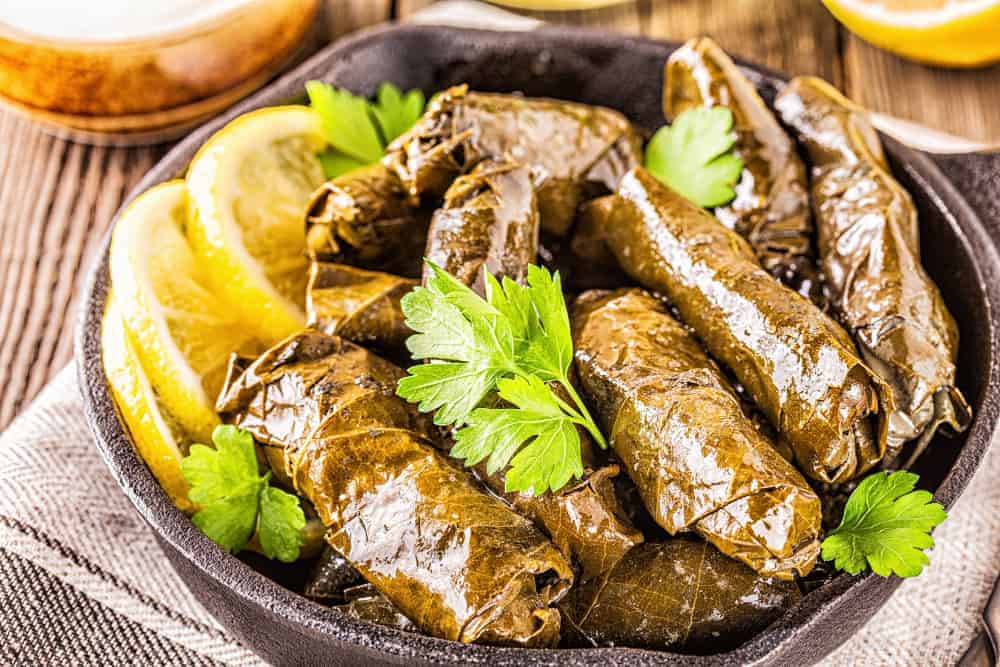
When it comes to Mediterranean cuisine, Dolma holds a top spot among the most unique dishes. It is prepared from seasoned rice, vegetables, seafood, offal or minced meat stuffed into young vine leaves, cabbage leaves or hollowed-out fruits.
Apart from the uniqueness of its preparation, Dolma is a dish for many nationalities. It is loved and appreciated by Turks, Greeks, Lebanese and Armenians. They all believe that Dolma is their creation.
How did such a simple stuffed dish find its way into millions of homes and restaurants in the Mediterranean?
Here you will get a little insight into the wonderful history, prevalence and regional variations of Dolma. It will help you understand how the dish became a favourite of several countries and
restaurants in Cork.
Etymology about Dolma
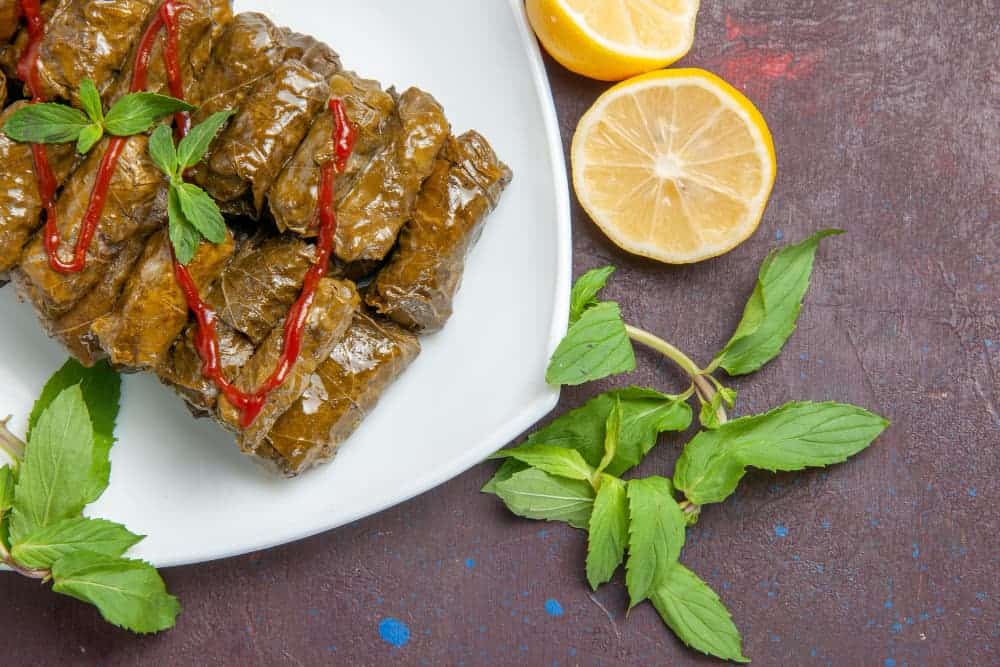
The name of the dish was taken from the Turkish term dolmak, which means "stuffed into something". The culinary experts of the Ottomans, who were among the first exponents of this cuisine, decided on this name because they prepared Dolma from seasoned vegetables, meat, seafood and/or rice stuffed into tender grape or cabbage leaves.
Tracing the Beautiful History of Dolma
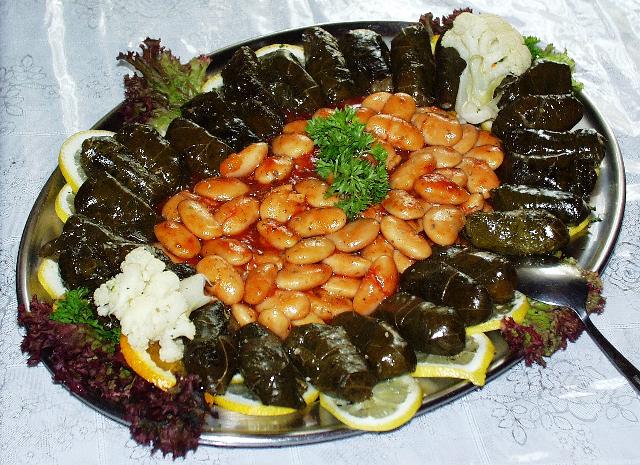
Millions of Dolma lovers believe that Dolma is a culinary creation of the Turks or Greeks.
But history claims otherwise. Records show that Dolma was first prepared in the city of Thebes, an ancient town on the Nile River.
The natives of Thebes stuffed seasonal meat and vegetables into vine leaves to make a dolma-like dish.
Around 335 BC, Alexander the Great and his soldiers conquered the city of Thebes. They recognised and fell in love with the city's culinary prowess, which filled the meal. The Greek warriors adopted the dish as part of their survival diet.
Later, Alexander and his troops introduced the art of Dolma preparation to their homeland of Greece. The Greeks called it
dolmades. They prepared it from minced lamb and rice, seasoned with garlic, currants and dill.
The spread of Dolma - how Dolma came to other countries
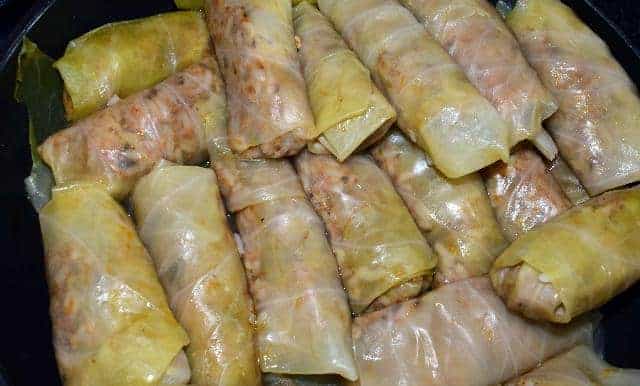
As with all tasty dishes, it did not take long for Dolma to spread to other countries. From Greece, Dolma spread to Turkey, a country conquered by Alexander the Great.
Dolma became famous in Turkey because of the Topkapi Palace. At that time, it was considered a noble food for the Sultan and other nobles. The palace cooks made this delicacy from plump vegetables stuffed with spiced meat. The dish was slowly cooked to a gallant perfection.
From Turkey, this classic cuisine spread to several other countries conquered by Alexander. Other early adopters of Dolma were Turkey's neighbours and Greece. Each culture modified the dish with its local ingredients. Some of the regions that adopted the cuisine early are:
Persian Gulf
Dolma found its way into the Persian Empire, a region that includes Bahrain, Saudi Arabia, Kuwait, Qatar, Iran, Iraq, and the United Arab Emirates,
around 334 BC (when Alexander the Great conquered the region). The culinary masters in this region make their Dolma from basmati rice.
They flavoured the rice with locally available ingredients such as cumin, tomatoes, eggplant, and onions. They then stuffed the seasoned rice into cabbage leaves to prepare a dish for special occasions such as Ramadan, Eid al-Fitr and Iftar.
Caucasus region
In the Caucasus region, Dolma first gained a foothold in Armenia and Azerbaijan. Gourmets in this region have maintained the traditional way of preparing Dolma. They made the delicacy from minced meat and rice wrapped in vine leaves. On some occasions, Armenians used cabbage leaves as an alternative to the tender vine leaves.
Central Asia
Dolma spread to Central Asia around 328 BC when Alexander the Great conquered Uzbekistan, Kazakhstan, and other Central Asia. Chefs in this region decided to stick with the traditional version of Dolma.
The Central Asians prepared Dolma during the spring season when the vine leaves were still young. They filled the leaves with minced meat or mutton, seasoned with onions, coriander, mint and parsley.
Dolma variants - the most popular types of Dolma
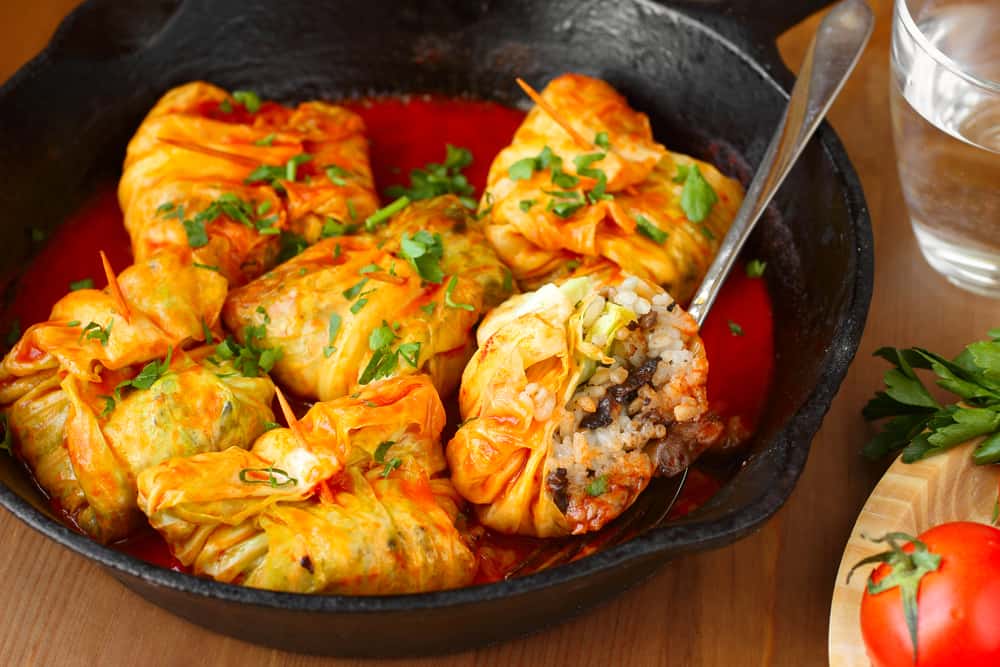
Almost every region of the world has a dolma variety, made from the spices and herbs available in that region. For example, some countries wrap their filling with cabbage leaves, while others use young vine leaves.
The most common regional variations you'll find in different cultures and
dinner restaurants are:
Stuffed vine leaves
This is the most common and original dolma variety. It is prepared in Turkey, Greece, Iran, Syria, Armenia, Israel and Egypt. As the name suggests, cooks stuff minced meat seasoned with local spices and herbs into young vine leaves to make the Dolma.
However, seasoned minced meat is not the only thing stuffed into vine leaf for making Dolma. Some vegetarian versions, called fake Dolma by the Turks, use rice flavoured with cinnamon, mint and other regional herbs.
Cabbage Rolls
Cabbage is an alternative wrap to vine leaves. It is preferred by Persians, Russians, Armenians, and other regions where cabbage is more available than vine leaves. Cabbage rolls are also common in cultures that have reservations about grape leaves.
Persian and Armenian cabbage rolls are the most common. Persian cabbage rolls contain a hearty combination of lentils, beans, and chickpeas seasoned with tomato paste, onions, and other herbs.
Armenian Dolma is a mixture of corn, shredded wheat, rice, chickpeas, lentils and beans. Armenians season the rolls with rose haw syrup for
lunch.
Vegetable Dolma
Known as Halep Dolmasi, the vegetable-filled Dolma is not a new thing. It has been around as long as the meat-filled versions. This kind was prepared for dolma lovers who could not find meat and those who could not tolerate meat.
Dolma lovers prepare it from a variety of locally available vegetables. They prepare it from eggplant seasoned with onions, peppers, black pepper, sour cream, tomato puree and other locally available herbs.
Seafood Dolma
Seafood lovers were not left out when Dolma entered the culinary world. The variety is widely available in Turkish households. Gourmets prepare the seafood dolma from mussels, mackerel, squid, calamari and sardines.
Some people mix the seafood with rice before stuffing it. They also season the seafood with pepper, onions, cloves, ginger, lemon juice, allspice and pimento. They call this variety of seafood Midye Dolma.
Offal dolma
Dalak Dolmasi, Dolma made from offal, was first prepared by the Armenians. They prepared this variant from a mixture of ground spleen and rice, seasoned with onion, salt, allspice, parsley and cumin. They served it with raki, a local beer.
Offal Dolma is quite different from traditional Dolma, which is made of stuffed vine leaves. However, in this version, the cooks stuff the minced meat and rice into the intestine. They cook the stuffed intestine on low heat and then fry it in cooking oil to prepare the speciality.
Fruit-based Dolmas
There are several varieties of fruit-based Dolmas. The most common is Elma Dolmas, a hollowed-out apple stuffed with ground lamb and rice. Unlike other types of Dolmas, which are quite easy to prepare, Elma Dolmas goes through a lengthy cooking process.
First, cooks boil black grapes and sumac to make juice. Then they stuff the hollowed apple with cooked lamb meat, some rice, salt, pepper and other suitable herbs.
Then the cooks boil the apples in the grape-flavoured sumac to make the fruit-based Dolma.
Conclusion
Dolma is an excellent dish. It gives each region the flexibility to use locally available ingredients to prepare it. This is probably why some dolmas include cabbage leaves or hollowed-out leaves as an alternative to grape leaves. Others have seafood, vegetables, and offal as an alternative to ground meat.
Regardless of the ingredients used, Dolma is a battleground of flavours. It offers a sweet blend of regional herbs and spices such as ginger, dill, mint, coriander or lemon juice. And what's more? Dolma has an excellent nutritional profile.
Frequently asked questions
What does a Dolma taste like?
Since it is made up of different ingredients, herbs and spices, there is no general description of the taste of Dolma. However, the traditional Dolma, which is made from seasoned lamb wrapped in vine leaves, has a slight citrus flavour from the vine leaves, a pleasant meaty taste, and blends the flavours of regional spices.
Are Dolmas Greek or Turkish?
Unlike many other cuisines, Dolma is not tied to a specific country. It is both Turkish and Greek. Some people also claim Dolma to be a dish from the Middle East, Armenia and Lebanon. Each of these countries has a Dolma variation prepared with local ingredients.
Do you eat the leaf in Dolma?
Whether prepared from cabbage or grape leaves, the leaves used as the wrapper for Dolma are edible. Vine leaves are tender, tangy and nutritious. The cabbage leaves also absorb the flavours of the spices and herbs you use to season your meat, rice, vegetables or seafood.
What do you eat with Dolma?
You can serve Dolma with yoghourt sauce, roasted potatoes with lemon, egg-lemon sauce, lemon juice, pita bread, creamy hummus, Greek salad, and a variety of dips. Ideally, there is no one dish you should eat with Dolma.
How do you make grape leaves for dolmas?
Dolma experts recommend that the best grape leaves should be young and unsprayed. Wash the grape leaves to remove dirt. Blanch the leaves in a salt solution or place them deep in hot water until they become soft. Rinse them well and let them dry before using.
Dolma is not Kurdish. However, Kurds have a variant of Dolma that identifies with their culinary culture.
Dolma is common in Central Asia, Middle East, the Mediterranean, the Balkans and the Caucasus. But everyone else in the world can eat Dolma too. No wonder it is offered in the best restaurants in the world.




